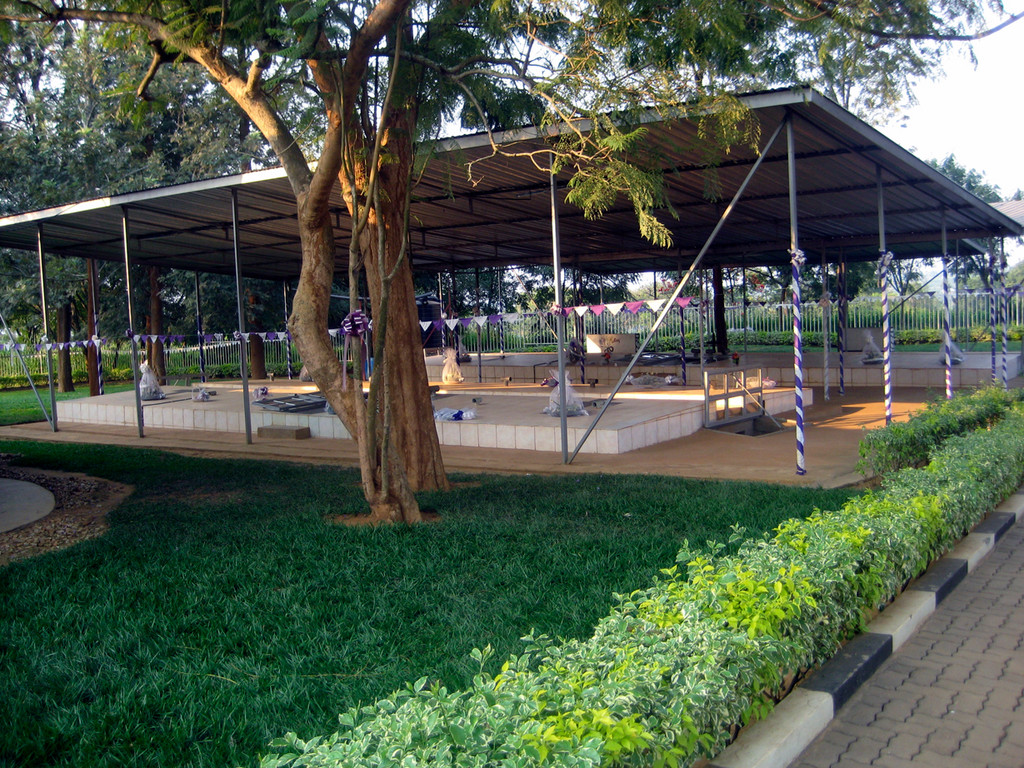Never forgetting her Rwandan experiences
Genocide memorials and speaking to survivors touches Hewlett student
Aurore’s favorite activity was playing hide-and-seek with her brother. Fillette’s favorite food was rice and chips. Organ’s best friend was her sister. All of these children were systematically killed during the 1994 genocide in Rwanda. These descriptions are provided under the pictures of innocent children, whose precious faces are preserved on the walls of the genocide Memorial Center in Kigali, the capital of Rwanda.
Rwanda is often associated with the 1994 genocide, because it was truly a tumultuous time in the country’s and the world’s history. Rwanda has recovered immensely since the conflict, but it is still important to remember what happened during the event. One should learn from the genocide as a way to prevent similar incidents from ever occurring again. It took only 100 days to kill one million people. The genocide was filled with violence, bloodshed, and merciless murder, as Hutu extremists killed Tutsis and other moderate Hutus. Society in Rwanda changed for the worse overnight as neighbors cared only about protecting their own identities.
This past summer, I spent a month in Rwanda. Before embarking on the trip, I familiarized myself with the country’s history of troubles through various books and movies. I entered the country with an understanding of the genocide that only literature and the media could have provided, but I left Rwanda with an understanding of the genocide glimpsed from the stories of primary sources and intimate community experiences. I saw genocide memorials in the small town of Nyamata and the Memorial Center in Kigali. In addition, I was privileged to meet with actual genocide survivors.
The first genocide memorial I visited was in a church. Ten thousand Tutsis and moderate Hutus were killed through mass murder that took place even before the genocide officially began in 1994. Two years prior to the genocide, Hutus tortured Tutsis who had hidden inside the church. When I entered the church, I was taken aback by the disturbing sights. There were rows and rows of blood-stained clothes that once belonged to Tutsis seeking refuge in the church. The clothes were of various colors, but they were all shriveled and faded. I shuddered at the thought that each piece of raiment represented a human being whose life ended here. Alongside the piles of clothes was a table covered in miscellaneous items. These items included an identity card, pieces of jewelry, and a digital wristwatch. The watch brought into stark focus that the genocide was a mere 18 years ago.
Throughout my visit at the Memorial Center in Kigali, I was bombarded with many different emotions. Feelings of anger, confusion, and disbelief all ran through my spine as I read about the causes, consequences, and impact of the conflict that occurred just a year before I was born. At times, I asked myself how a somewhat peaceful country could become one of torture, abuse, and murder. One room of the museum particularly stood out to me. There was a video of various genocide survivors speaking about their thoughts on the genocide. Although the Rwandans spoke in Kinyarwanda, the English subtitles made the messages clear. One man explained that he is unable to forgive anyone for what happened. The genocide impacted him emotionally and mentally in ways more profound than I would ever have imagined. He felt useless. He was afraid to love or trust anyone. He was even afraid of life itself.
An afternoon spent with two specific individuals was one that I found extremely meaningful. Anastaz, the rescuer, and Claude, his adopted son, conveyed a heart-wrenching story of bravery and appreciation. During the genocide, Anastaz was a watchman at an orphanage in Nyamata. He protected all of the children in the orphanage and cared for them as if they were his own. He put his own life at risk because he cared so deeply about the lives of others. He explained how he managed to save the children when Hutu extremists came for them; he destroyed the identification lists and told the ring leader that he didn’t know whether the children were Hutu or Tutsi. Although Anastaz spoke in a language foreign to me, his smile and widely opened eyes showed how proud he was of his accomplishment.
The genocide taught me many lessons that I will take with me for the rest of my life. I learned that when people go out of their way, they have the ability to powerfully affect the lives of others. The stories of people who persevered and stayed strong despite the horrible circumstances taught me to value the simple things in life that are often taken for granted. Things can go so wrong in such a short amount of time. (In this case, 100 days.) But from now on, I will take nothing for granted. Going to the memorial in Nyamata and the museum in Kigali, and speaking to genocide survivors were experiences that I will never forget.
Hagen, in her senior year at Hewlett High School, was in Rwanda from July 1-26 through a Putney student travel program. This was the second of two articles.









